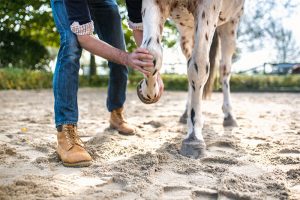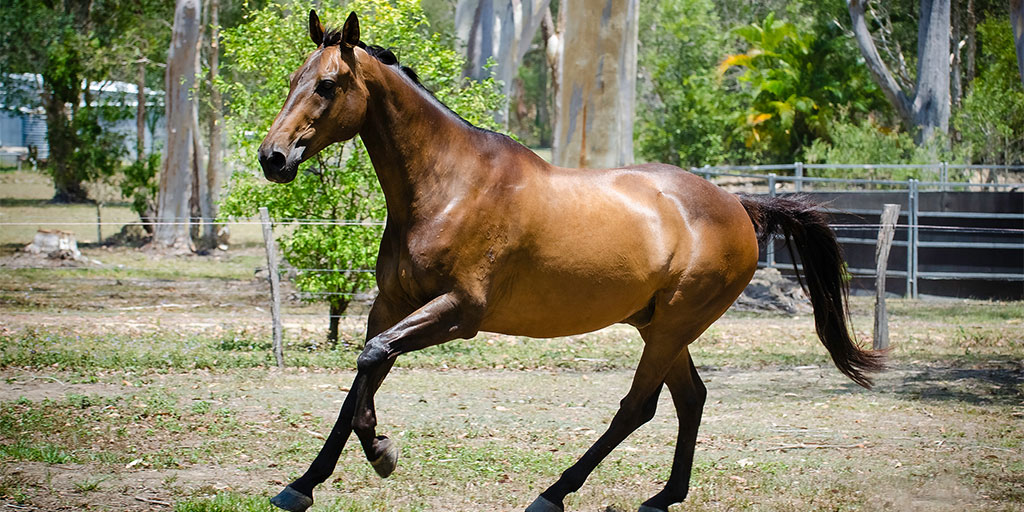Most horses will experience lameness at some point in their lives.
However, what can start as a minor limp may be an indication of something more serious, so it’s important to know the signs to look out for.
In this blog we take an in-depth look at equine lameness, including the key symptoms, what you should do if you think your horse is lame, and how a vet can help.
How can I tell if my horse is lame?
Spotting a limp seems like it should be easy, but it’s not always the case. Lameness can vary from mild to severe, so the symptoms can also be quite different.
While a horse will sometimes not want to bear any weight at all on the affected leg, the signs of lameness are often quite subtle.
You may be riding your horse and have a gut feel that something is not quite right. Perhaps your horse’s head is bobbing more while walking, or the sound of its feet striking hard surfaces aren’t quite as even as usual. Your horse may have a sudden aversion to moving in a certain direction or be reluctant to canter.
What should I do next?
If you suspect your horse may be lame, and is displaying some more subtle symptoms, it’s important to take a closer look at what may be going on. If your horse is reluctant to get up, or can’t bear weight on one of its legs, then ring your vet straight away.
- Check your horse’s hooves

Take a good look at your horse’s feet and give them a good clean with a hoof pick. Sometimes a limp is caused by a trapped stone which is causing significant discomfort. Once you’ve cleaned the hooves, check for any difference in wear patterns as well as the presence of cracks or abrasions which could indicate an injury.
- Examine the horse’s whole body
Run your hands across the horse’s back and neck before moving down each leg. Take note if it flinches, kicks, or reacts in any way. Also check for wounds as well as any obvious swelling or heat which could indicate inflammation.
- Watch your horse move
Enlist the help of a second person so you can carefully observe your horse from a distance. Guide your horse to walk in a circle, going in both directions. Have your helper ride the horse, again in circles, first at walking pace and then trotting. Is your horse dropping its head when stepping on a particular limb? Is its stride smooth and equal? Does it look the same when moving in both directions?
Once you have a clearer idea about your horse’s lameness, it’s important to book an appointment with your equine veterinarian. Only your vet will be able to pinpoint the reason for the lameness.
While waiting for the vet to visit, move your horse back to their stall – or into a small paddock – to prevent any further damage being done. It’s also important not to ride your horse until your vet has given your horse the all-clear.
What will a vet do to diagnose lameness?
The first step an equine vet will take is to assess the lameness. They will determine the affected leg, assess the severity, and try and ascertain the cause. Any information you can share from your observations of your horse will be helpful to your vet in their assessment and subsequent treatment.
Your vet will also use a nerve block to the affected site to isolate the pain and allow for diagnostic imaging to further identify the cause of the lameness.
Once a diagnosis has been made, a treatment plan will be initiated. This can range from pain control and anti-inflammatory injections to arthritis management and rehabilitation.
Contact the CVS team
If you are ever concerned that your horse may be lame, please don’t hesitate the contact the Cameron Veterinary Services team for advice. Call us on 08 8318 1801.



